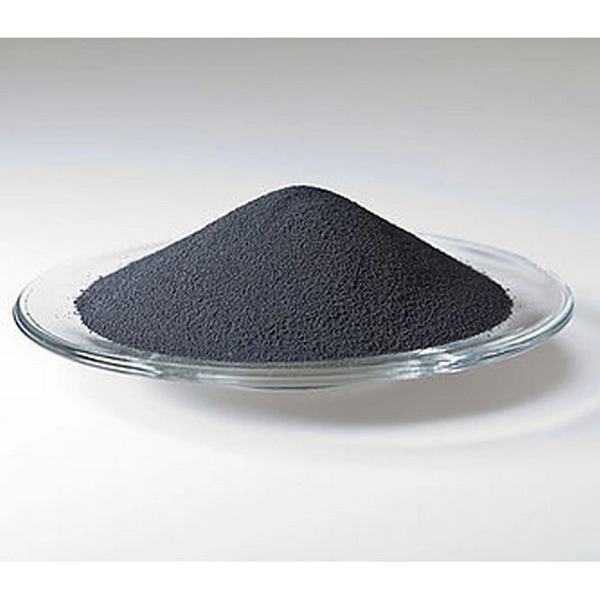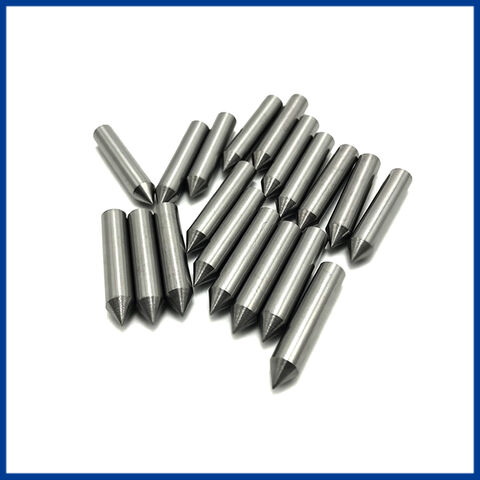Content Menu
● Introduction to Cemented Carbide
>> Composition and Properties
● Health Risks Associated with Cobalt
● Safety Data Sheets (SDS) for Cemented Carbide Products with Cobalt Binder
● Regulatory Framework
● Safety Measures and Best Practices
● Environmental Impact
>> Recycling Cemented Carbide
● Alternatives to Cobalt
● Conclusion
● Frequently Asked Questions
>> 1. What are the primary health risks associated with cobalt in cemented carbide products?
>>> 2. How can workers protect themselves from cobalt dust when grinding cemented carbide?
>> 3. What are the regulatory exposure limits for cobalt in the workplace?
>> 4. Can cobalt cause cancer?
>> 5. What first aid measures should be taken in case of cobalt exposure?
● Citations:
Cemented carbide products with cobalt binder are widely used in various industries, including industrial manufacturing, military applications, metallurgy, oil drilling, mining tools, and construction. These products are valued for their exceptional hardness and wear resistance, making them ideal for cutting tools and other applications where durability is crucial. However, the use of cobalt as a binder in cemented carbide raises important health concerns due to its potential toxicity. This article will delve into the health risks associated with cobalt in cemented carbide products and provide insights into safety measures and regulatory guidelines.

Introduction to Cemented Carbide
Cemented carbide, also known as tungsten carbide, is a composite material made from tungsten carbide particles bonded together by a metal binder, typically cobalt. The tungsten carbide provides hardness and wear resistance, while the cobalt binder enhances toughness and helps maintain the structural integrity of the material.
Composition and Properties
- Tungsten Carbide (WC): This is the primary component, contributing to the hardness and wear resistance of the material.
- Cobalt Binder: Cobalt acts as a binder, improving the toughness and cohesion of the tungsten carbide particles.
Health Risks Associated with Cobalt
Cobalt is a key component in cemented carbide products, but it poses significant health risks, particularly when inhaled or ingested. The primary health concerns include:
1. Respiratory Problems: Inhalation of cobalt dust can lead to respiratory issues, including asthma and interstitial fibrosis, known as "Hard Metal Lung Disease." This condition can result in permanent lung damage and even death if not properly managed.
2. Carcinogenic Potential: Cobalt is classified as a potential carcinogen by the International Agency for Research on Cancer (IARC). When combined with tungsten carbide, it is considered a Group 2A carcinogen, meaning it is probably carcinogenic to humans.
3. Skin and Eye Irritation: Cobalt can cause skin irritation and allergic reactions, including cobalt dermatitis. Eye contact may lead to conjunctivitis.
4. Systemic Effects: Ingestion of cobalt can cause gastrointestinal irritation and, in large amounts, may affect the heart and other organs.
Safety Data Sheets (SDS) for Cemented Carbide Products with Cobalt Binder
Safety Data Sheets (SDS) are crucial for understanding the hazards associated with cemented carbide products containing cobalt. These documents provide detailed information on the composition, potential health effects, and necessary safety precautions.
- Inhalation Hazards: SDS documents highlight that inhalation of dust from grinding cemented carbide can cause respiratory irritation and potentially lead to serious lung conditions.
- Exposure Limits: The Occupational Safety and Health Administration (OSHA) and the American Conference of Governmental Industrial Hygienists (ACGIH) set exposure limits for cobalt to minimize health risks. For example, the OSHA Permissible Exposure Limit (PEL) for cobalt is 0.1 mg/m³.
- First Aid Measures: In case of exposure, immediate action is required, including removal from the exposure area, washing affected areas, and seeking medical attention if necessary.
Regulatory Framework
Regulatory bodies worldwide have established guidelines to mitigate the risks associated with cobalt in cemented carbide products. These include:
- OSHA Regulations: OSHA sets permissible exposure limits to protect workers from hazardous substances like cobalt.
- IARC Classification: IARC classifies substances based on their carcinogenic potential, which influences regulatory policies.
- ACGIH Threshold Limit Values (TLVs): These are more conservative than OSHA PELs and provide additional safety margins.

Safety Measures and Best Practices
To minimize health risks when working with cemented carbide products containing cobalt, the following safety measures are recommended:
1. Use Personal Protective Equipment (PPE): Wear masks, gloves, and protective eyewear to prevent inhalation and skin contact.
2. Maintain Ventilation: Ensure good ventilation in work areas to reduce dust concentrations.
3. Avoid Ingestion: Prevent eating, drinking, or smoking in areas where cobalt dust may be present.
4. Regular Health Check-ups: Monitor workers for signs of cobalt exposure and provide regular health screenings.
5. Training and Awareness: Educate workers on the risks associated with cobalt and the importance of following safety protocols.
Environmental Impact
Beyond health risks, the production and disposal of cemented carbide products can have environmental implications. The mining of tungsten and cobalt can lead to soil and water pollution if not managed properly. Additionally, the recycling of cemented carbide products is becoming increasingly important to reduce waste and conserve resources.
Recycling Cemented Carbide
Recycling cemented carbide involves collecting used products, such as worn-out cutting tools, and processing them to recover tungsten carbide and cobalt. This not only reduces waste but also conserves raw materials and minimizes the environmental impact of mining.
Alternatives to Cobalt
As concerns over cobalt toxicity grow, researchers are exploring alternative binders for cemented carbide products. Materials like nickel and iron have been considered, but they often compromise on performance compared to cobalt. However, advancements in technology may lead to more viable alternatives in the future.
Conclusion
Cemented carbide products with cobalt binder are essential in various industries due to their exceptional properties. However, the use of cobalt poses significant health risks, including respiratory problems, potential carcinogenic effects, and systemic toxicity. It is crucial to adhere to safety guidelines, use personal protective equipment, and maintain good ventilation to minimize exposure risks. Regulatory bodies continue to monitor and update guidelines to ensure worker safety. Additionally, environmental considerations and the exploration of alternative binders are important steps towards a more sustainable future for these products.

Frequently Asked Questions
1. What are the primary health risks associated with cobalt in cemented carbide products?
Cobalt exposure can lead to respiratory issues like "Hard Metal Lung Disease," potential carcinogenic effects, skin irritation, and systemic toxicity affecting organs such as the heart.
2. How can workers protect themselves from cobalt dust when grinding cemented carbide?
Workers should use personal protective equipment (PPE) like masks and gloves, maintain good ventilation, and avoid eating or drinking in work areas to prevent ingestion.
3. What are the regulatory exposure limits for cobalt in the workplace?
The OSHA PEL for cobalt is 0.1 mg/m³, while ACGIH TLVs are often more conservative, emphasizing the importance of minimizing exposure.
4. Can cobalt cause cancer?
Cobalt is considered a potential carcinogen, and when combined with tungsten carbide, it is classified as a Group 2A carcinogen by IARC, meaning it is probably carcinogenic to humans.
5. What first aid measures should be taken in case of cobalt exposure?
In case of exposure, remove the affected person from the area, wash affected skin or eyes with water, and seek medical attention if symptoms persist.
Citations:
[1] https://saturnmachineworks.com/wp-content/uploads/2020/11/20-07-03-Saturn-Safety-Data-Sheet-for-Tungsten-Carbide-with-Cobalt.pdf
[2] https://www.basiccarbide.com/assets/pdfs/basic-carbide-safety-data-sheet.pdf
[3] https://www.westernsupplies.com/admin/msds_pdfs/Cemented%20Carbide%20Grades%20(Cemented%20Tungsten%20Carbide%20wcobalt%20filler)_tv0egn3l.pdf
[4] http://www.casmetcarbide.com/images/Casmet_MSDS-WC.pdf
[5] https://mdsearchlight.com/health/cobalt-toxicity-toxic-levels-of-cobalt/
[6] https://media.napaonline.com/is/content/GenuinePartsCompany/863925pdf
[7] https://www1.mscdirect.com/MSDS/MSDS00028/63634018-20130607.PDF
[8] http://www.carbidetechnologies.com/wp-content/uploads/2018/12/SDS-CARBIDETECHNOLOGIES.pdf
[9] https://ntp.niehs.nih.gov/sites/default/files/ntp/roc/content/profiles/cobalttungstencarbide.pdf
[10] https://www.innovativecarbide.com/wp-content/uploads/2020/07/SDS-2018-REV-1.pdf
[11] https://mastercuttool.com/wp-content/uploads/2022/09/SDS-R3-2022.pdf
[12] https://www.sciencedirect.com/science/article/abs/pii/S0013935185710262
[13] http://www.sciencemadness.org/talk/viewthread.php?tid=73485
[14] https://shop.gfii.com/images/GFI%20SDS%2002%20-%20Carbide%20Product%20-%20December%202019.pdf
[15] https://www1.mscdirect.com/MSDS/MSDS00074/45219219-20180317.PDF
[16] https://tsapps.nist.gov/srmext/msds/888-MSDS.pdf
[17] https://nj.gov/health/eoh/rtkweb/documents/fs/1960.pdf
[18] https://pubmed.ncbi.nlm.nih.gov/18628793/
[19] http://www.osha.gov/laws-regs/standardinterpretations/1987-02-11
[20] https://pubmed.ncbi.nlm.nih.gov/1472440/
[21] https://www.sciencedirect.com/science/article/abs/pii/S0043164817303101
[22] https://www.sciencedirect.com/science/article/pii/0048969794901252
[23] https://www.cdc.gov/niosh/npg/npgd0647.html
[24] https://analyticalscience.wiley.com/content/article-do/tungsten-carbide-cobalt-nanoparticles-harmful-health
[25] https://www.sciencedirect.com/science/article/pii/S026343681830533X
[26] https://www.ufz.de/index.php?en=35548
[27] https://www.ceratizit.com/int/en/sustainability/blog/2021/blogposting-cemented-carbide.html
[28] https://www.wkwinc.com/images/sds_carbide.pdf
[29] https://www.zehnder-cleanairsolutions.com/en/blog/cobalt-dust-health-risks
[30] https://www.mdpi.com/1996-1944/16/16/5560
[31] https://wyburtools.com/Images/Wybur%20Tools%20Safety%20Data%20Sheet-Carbide%20Burs.pdf
[32] https://pmc.ncbi.nlm.nih.gov/articles/PMC4062194/
[33] https://www.nhm.co.jp/english/technical_info/whatis/
[34] https://cdn.mscdirect.com/global/images/ProductDataSheet/pds_sku_1406023_safetydatasheet_safety.pdf
[35] https://www.vistametalsinc.com/sds.pdf
[36] https://www.chemicalbook.com/msds/tungsten-carbide-with-cobalt-binder.pdf
[37] https://www.westernsupplies.com/admin/msds_pdfs/Cemented%20Carbide%20Grades%20(Cemented%20Tungsten%20Carbide%20wcobalt%20filler)_tv0egn3l.pdf
[38] http://www.carbidetechnologies.com/msds/
[39] https://www.hannibalcarbide.com/technical-support/msds/
[40] https://www1.mscdirect.com/MSDS/MSDS00015/09906199-20171109.PDF
[41] https://www1.mscdirect.com/MSDS/MSDS00022/78017944-20170802.PDF
[42] https://webshop.iscar.de/downloads/action/show_file/product/1949183/file_type/MSDS
[43] https://us.ns-tool.com/en/download/pdf/SDS-WC-JA20171_en.pdf
[44] https://media.napaonline.com/is/content/GenuinePartsCompany/863925pdf
[45] https://carbideprocessors.com/pages/technical-info/grinding-carbide-health-and-safety-risks.html
[46] https://www.diva-portal.org/smash/get/diva2:1237216/FULLTEXT01.pdf
[47] https://innovationfilter.com/blog/cobalt-leaching/
[48] https://pmc.ncbi.nlm.nih.gov/articles/PMC8633919/
[49] https://ceramics.org/ceramic-tech-today/researchers-investigate-feasibility-of-nanoceramics-as-binder-in-cemented-carbide-tools/
[50] https://asia.kyocera.com/products/cuttingtools/images/sds/pdf/msds_cemented_carbide_e.pdf
[51] https://www.techmet-carbide.com/customer/Content%20Pages/Resources%20Page/SDS.pdf
















